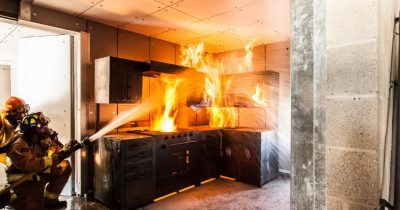 Home fires are common and deadly. The most common type of fire starters are cigarettes, and frayed electrical wires. Laptops and even the sun’s rays reflected through an empty glass can cause fire, a rare case but it happened.
Home fires are common and deadly. The most common type of fire starters are cigarettes, and frayed electrical wires. Laptops and even the sun’s rays reflected through an empty glass can cause fire, a rare case but it happened.
Do you have the right kind of smoke alarms? Do you know if they are working? The primary purpose of a smoke alarm is to prevent injury and to save lives, not property. The alarms buy you time to escape! There are three options:
- Ionization alarms are more responsive to flaming fires but sluggish in detecting slow burning, smoldering fires.
- Photoelectric alarms are quicker to detect smoldering fires, before they produce flames.20 to 50 minutes faster than ionization alarms. A significant head start to escape.
- Dual sensor alarms combining both features are the best choice. They will detect heat before a fire has produced a lot of smoke and they will detect smoke before a smoldering fire has erupted.
Like most equipment smoke alarms have a limited life expectancy, a maximum of 10 years. To insure yours are working:
- Test the alarms monthly by pressing the test button.
- Replace the batteries regularly, at least every six months.
Most newer homes (built in the last 10 to 15 years), the alarms are hard-wired and the batteries provide back-up power. In older homes, batteries are the sole power source. In either event, you want to be sure they are working.
In addition do not forget carbon monoxide detectors, if you have any combustion sources (gas, oil, etc.) in your home, they are no less important than smoke alarms. The detectors should be installed in central locations outside every sleeping area and on every level of the home, and like smoke alarms,they should be interconnected.
Criterium-McWilliam Engineers specialize in residential, structural, and commercial building inspections. We welcome the opportunity to discuss all of the engineering services we can provide for you and your client.
